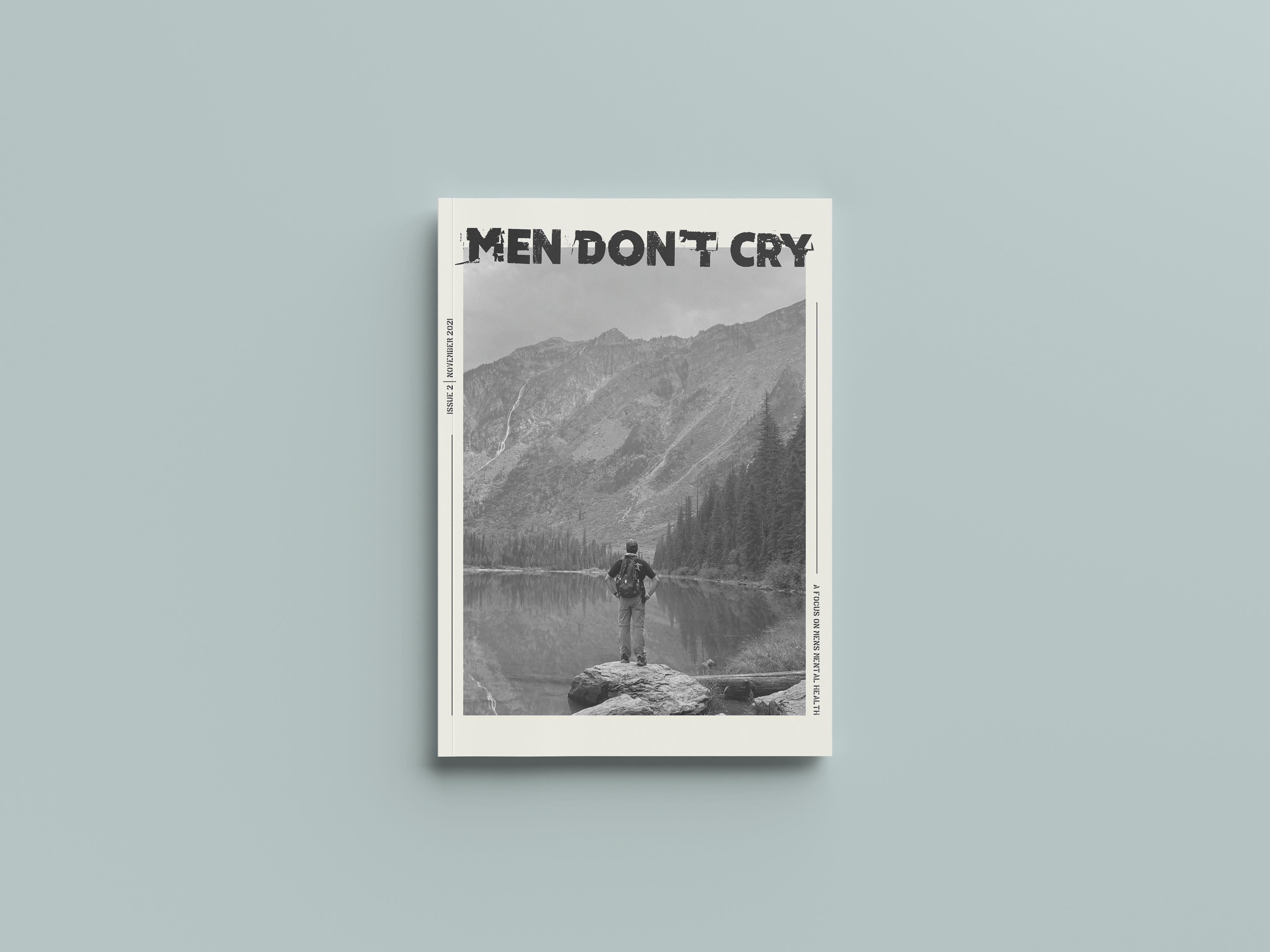
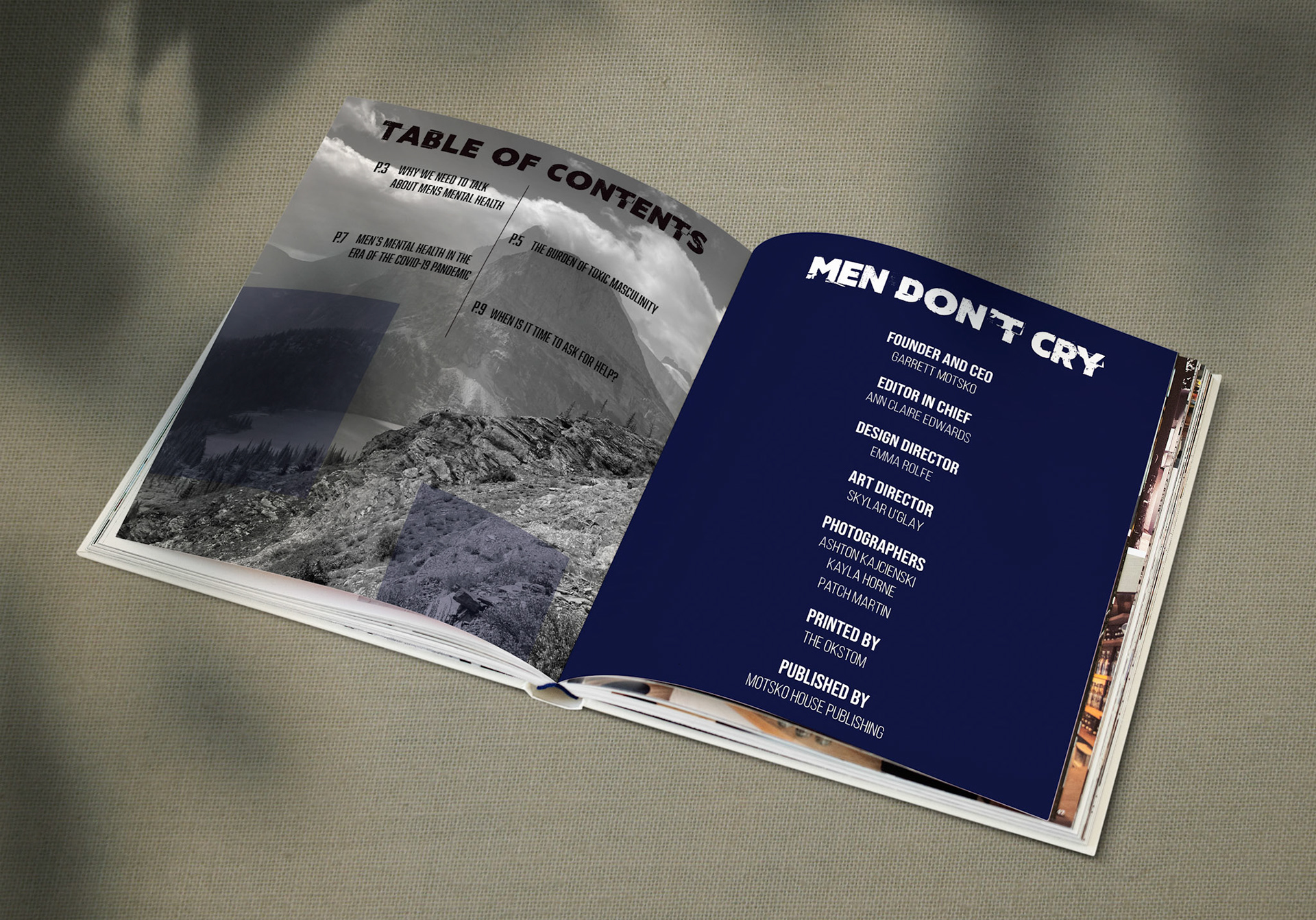
Sunflower on a magazine mockup
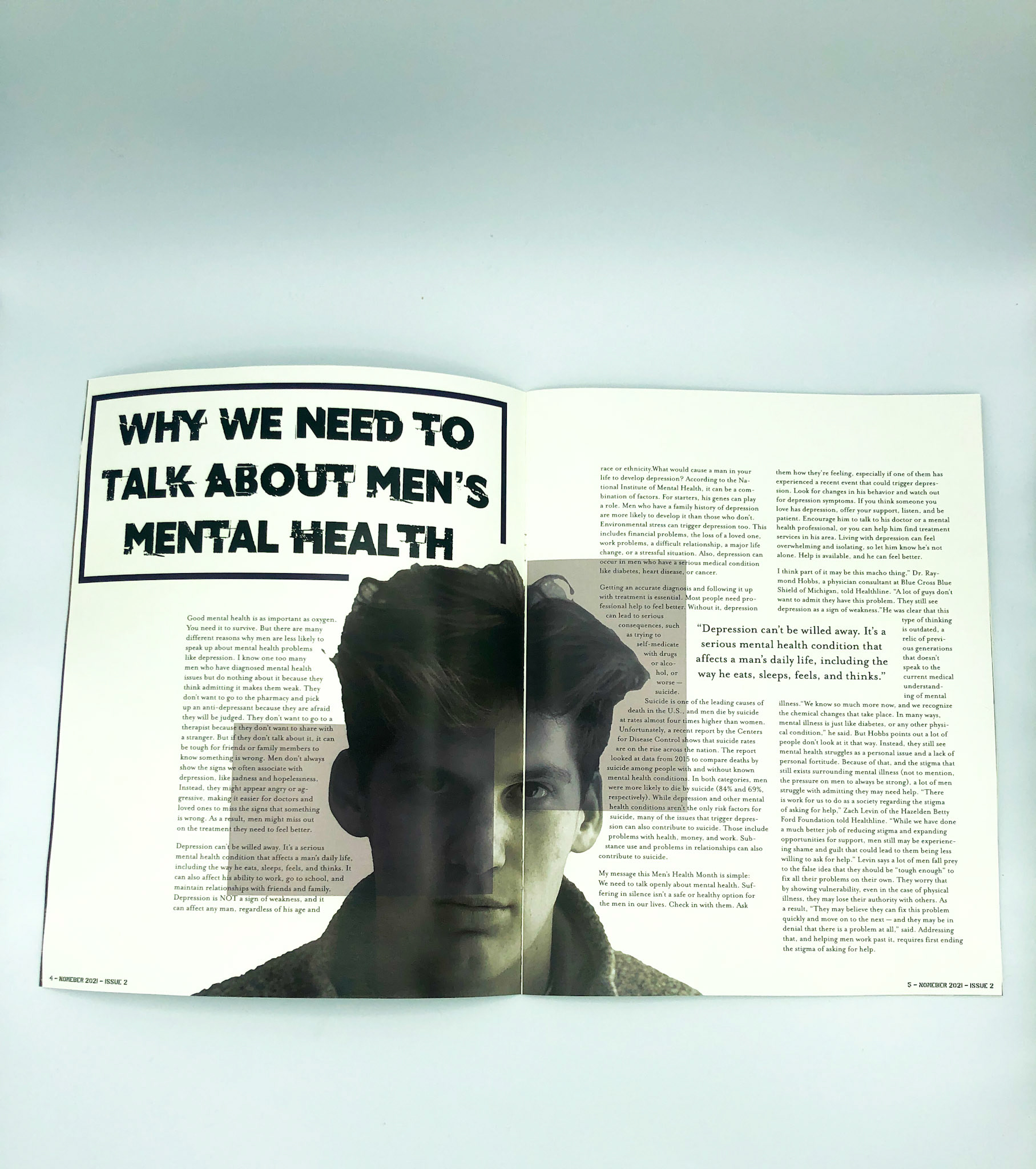
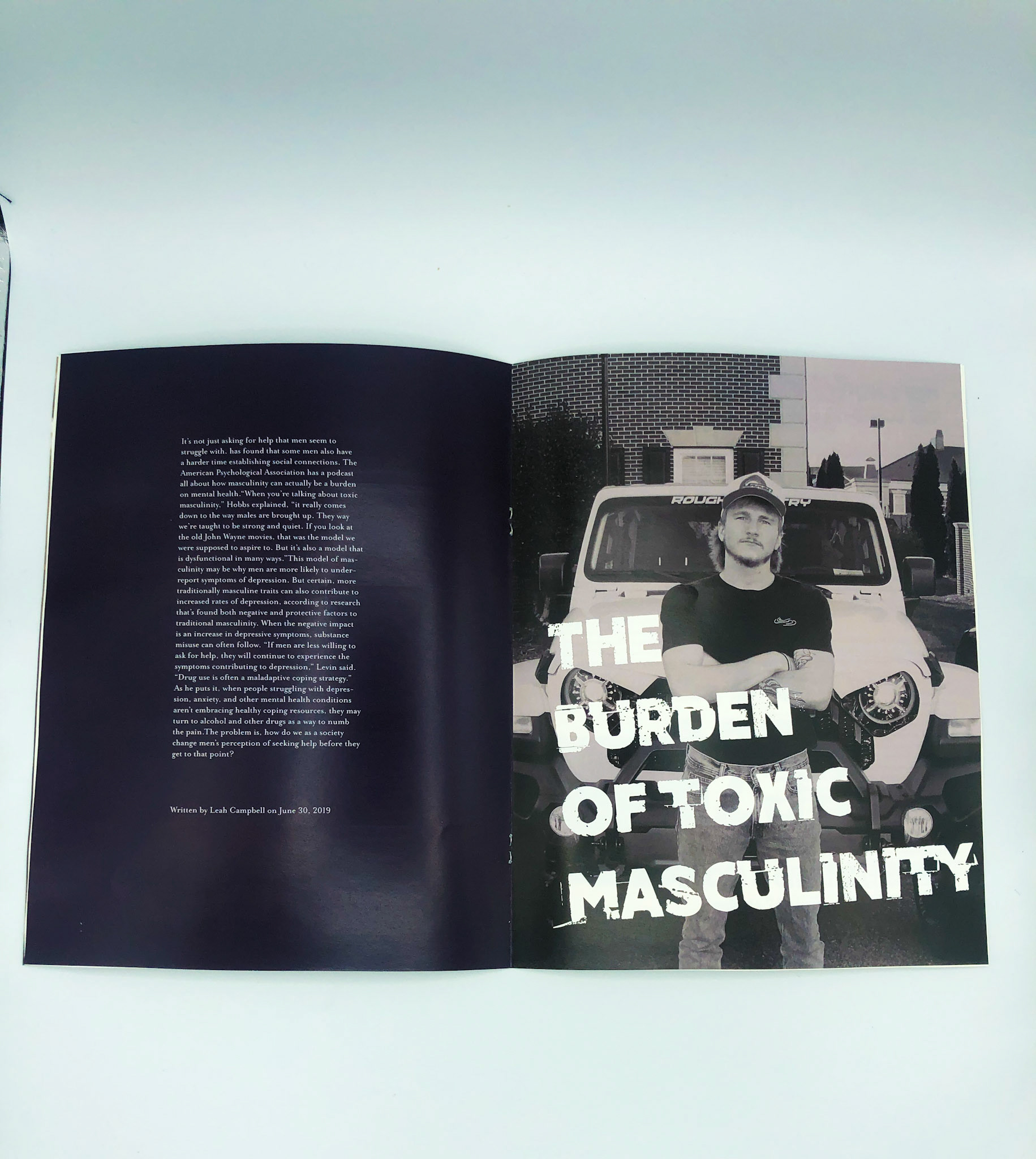
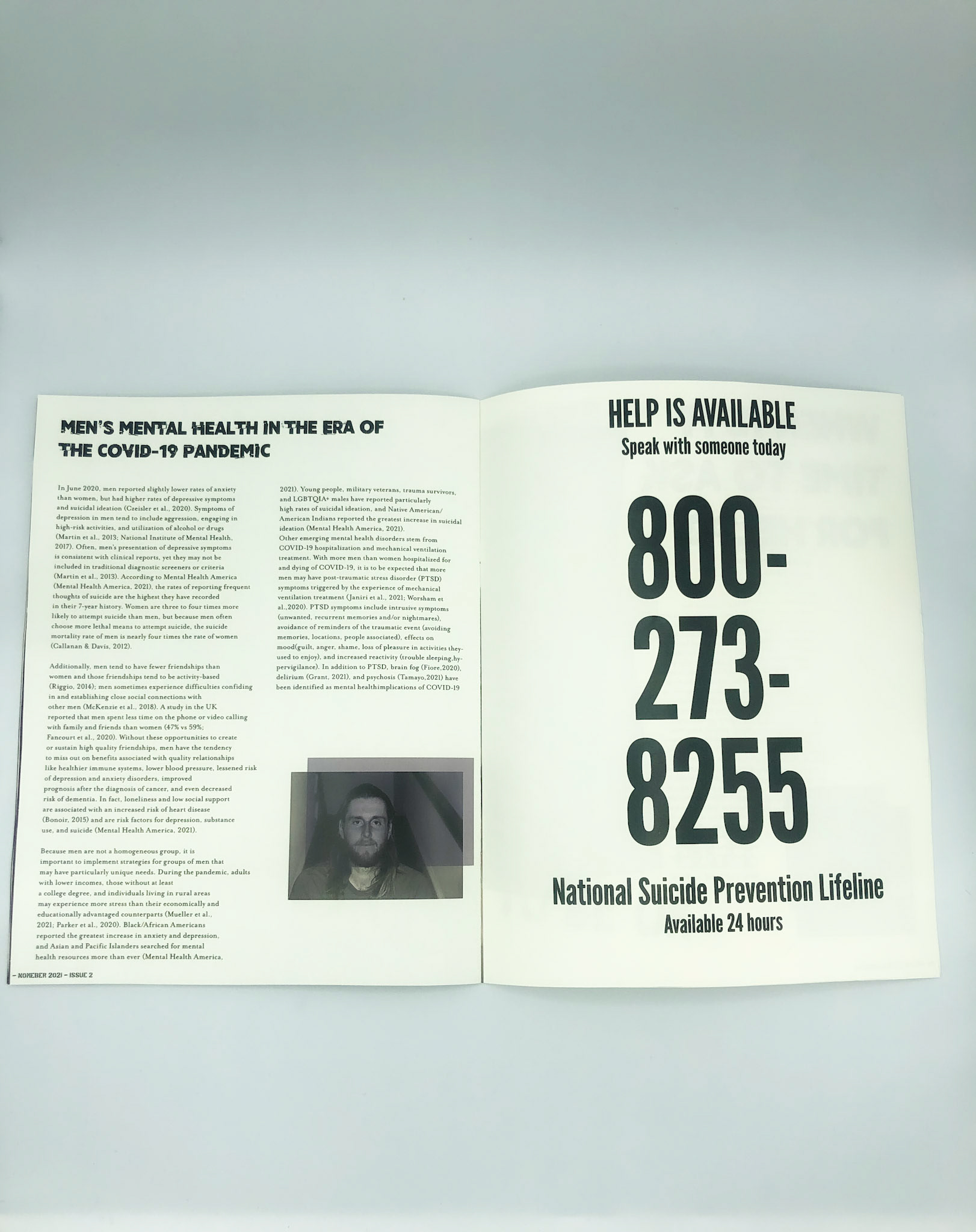
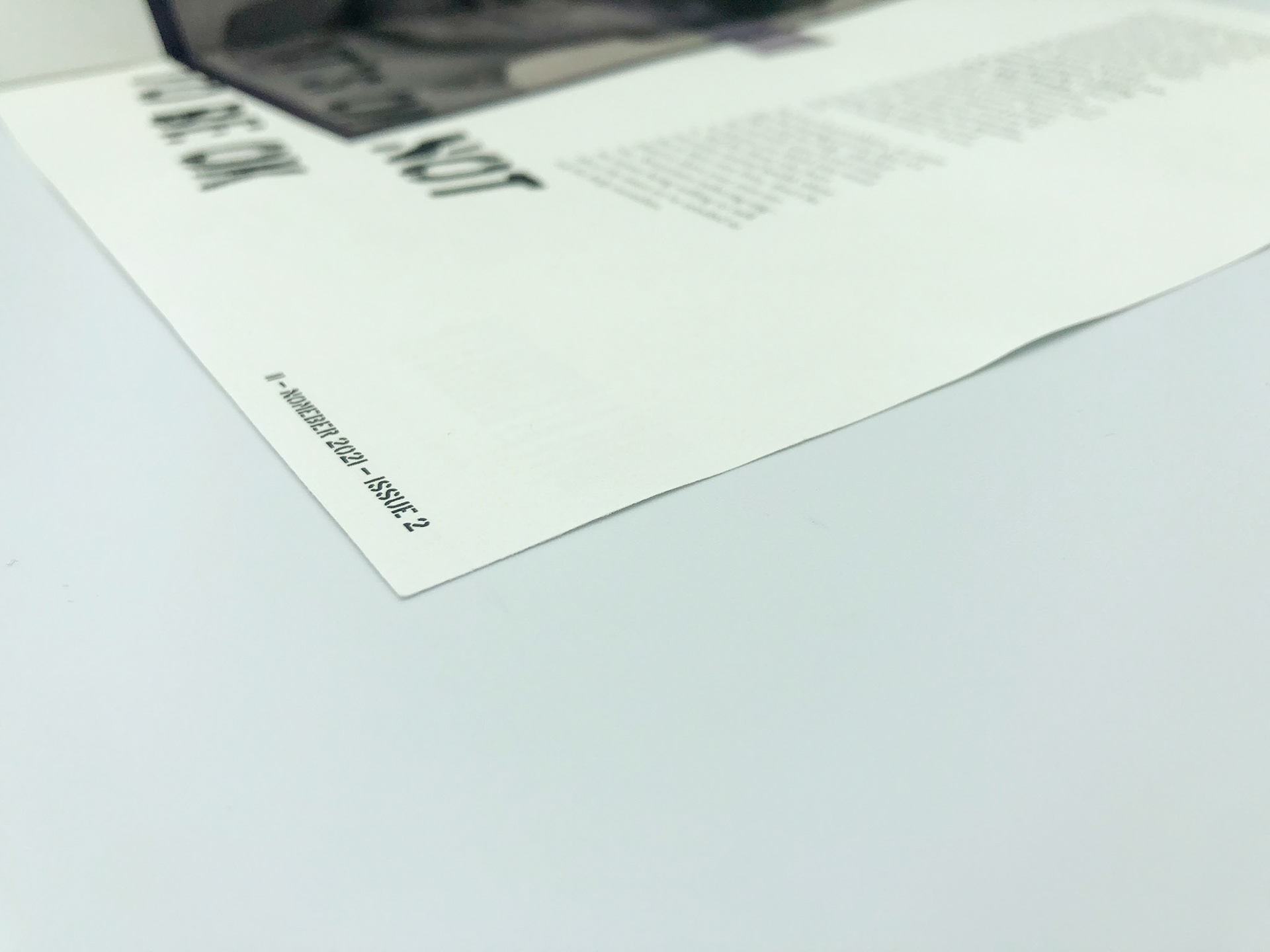
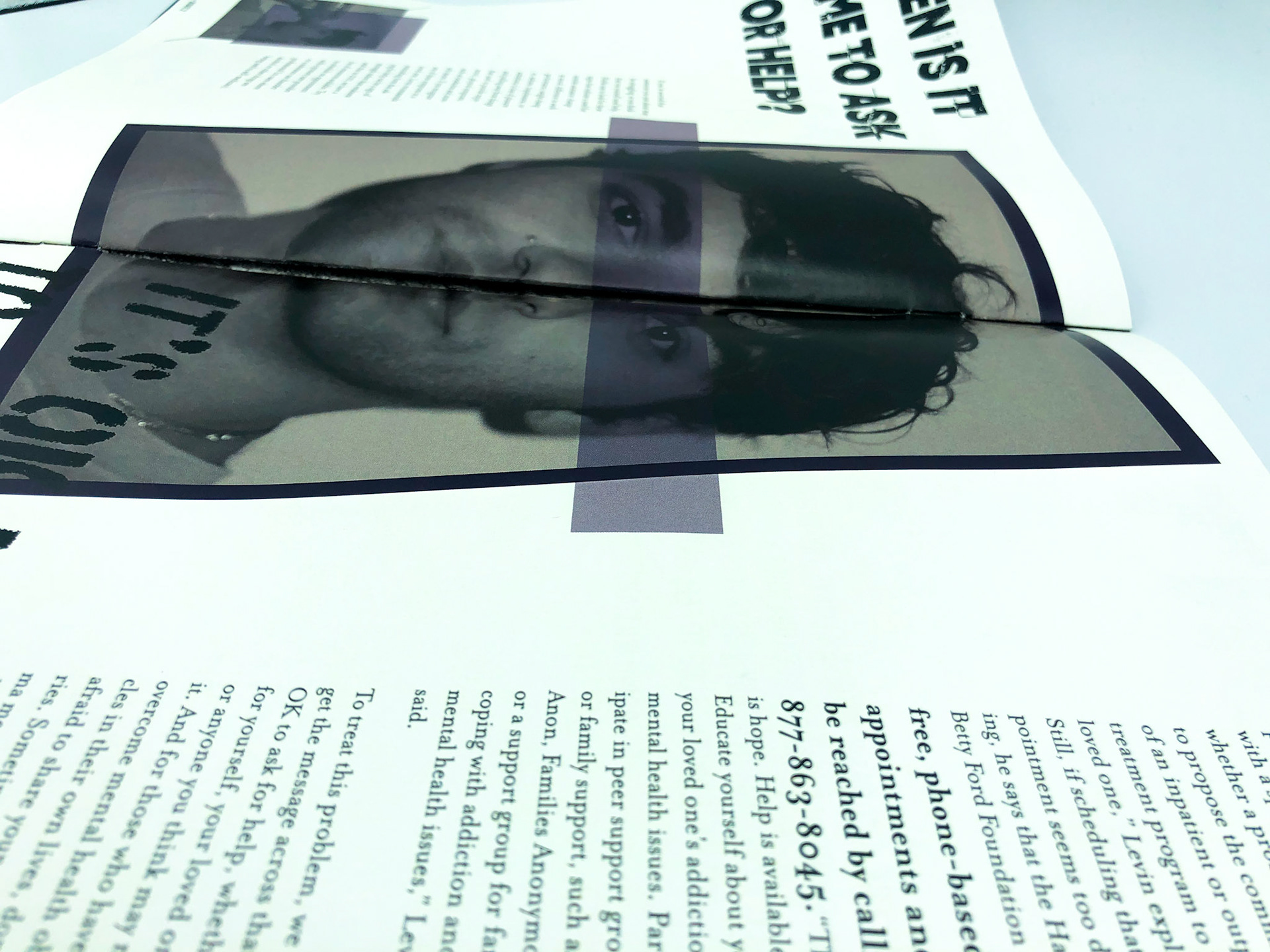
Men Don’t Cry is a magazine concept that focuses on the stigma surrounding men's mental health. This magazine was created during Men's Mental Health Month as an awareness piece to help bring attention to the serious issue that plagues so many men. Men Don’t Cry uses all personal imagery and addresses several points throughout the spreads. I employed the use of modern typesetting and expressive typography to help create a system that helps the reader understand the deeper meaning behind the magazine. The typesetting was based on a modified grid layout, and I used color to accent the imagery. I used all black-and-white images to let the text speak for itself. In recent years, there has been a growing awareness of the mental health struggles that many men face. Despite this, there is still a pervasive stigma surrounding men's mental health, which often leads to men feeling ashamed or hesitant to seek help. As a result, many men suffer in silence, and their mental health issues go untreated. This is why I created Men Don't Cry, a magazine that aims to provide a safe space for men to talk openly about their mental health struggles. Our mission is to end the stigma surrounding men's mental health and provide resources and support to help men lead happier, healthier lives. Through my magazine, I tackle a range of mental health issues that affect men, from depression and anxiety to addiction and trauma. Men Don’t Cry features stories from men who have experienced these issues firsthand, as well as expert advice from mental health professionals. But Men Don't Cry is more than just a magazine. I aimed to create a community where men can connect and support one another. I believe that talking openly about men's mental health is crucial to ending the stigma surrounding it. By providing a platform for men to share their stories, I hope to break down the barriers that prevent men from seeking help. Typography and photography are essential components of Men Don't Cry magazine, as they work together to enhance the overall aesthetic and impact of the publication. The typography is carefully selected to convey the tone and message of each article, with bold and striking fonts used for headlines to capture the reader's attention. The body text is easy to read, with a clean and modern font that complements the magazine's overall design. In addition, the magazine features powerful photography that captures the essence of each story, helping to convey the emotions and experiences of the men featured. The combination of typography and photography creates a visually compelling magazine that draws the reader in and helps to emphasize the importance of the message being conveyed about men's mental health






